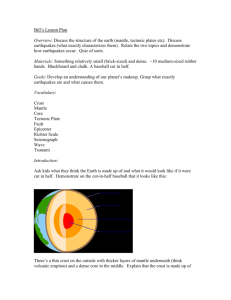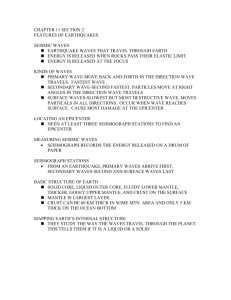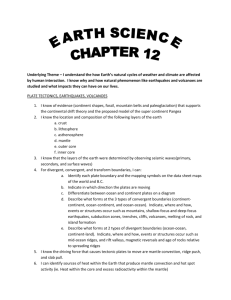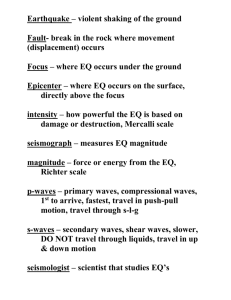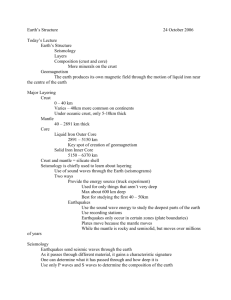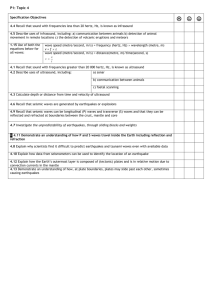Seismic waves
advertisement
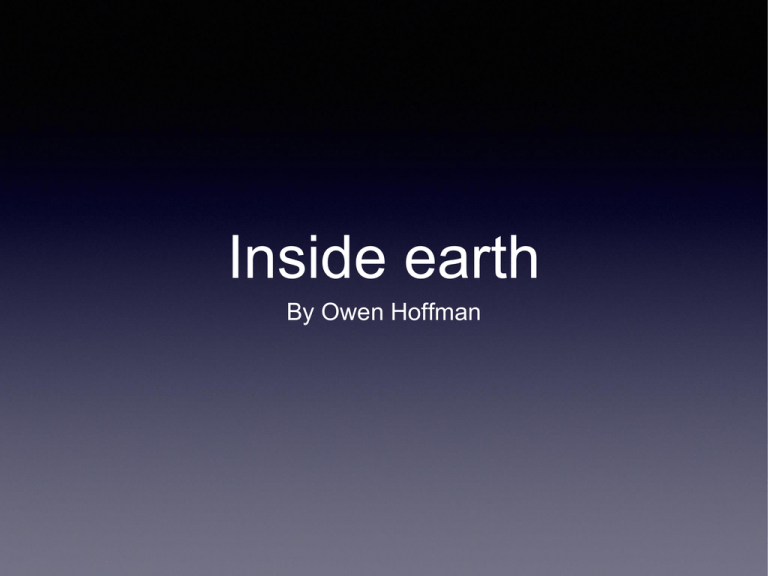
Inside earth By Owen Hoffman Seismographs and seismograms • Scientists study earthquakes to find out what the earth is like under the crust. • To find out the intensity of a earthquake scientists use seismographs. • Seismographs are used to make seismograms. Fault lines and tectonic plates • The Earth outer layer is a broken up shell.These pieces are tectonic plates. • When the mantle is heated up by the core it the hot mantle rises and then it cools down and lowers,and the tectonic plates go with the movement of the mantle. • When the plates rub together they can create mountains, volcanos, or earthquakes Earthquakes • Earthquakes happen when a tremendous amount of energy is released from the Earth's crust. • There are hundreds of tiny earthquakes happen a year, but we can't feel them. • But the earthquakes we talk about cause massive destruction and are really dangerous. Seismic waves • A seismic wave is a wave of energy that is generated by an earthquake of other earth vibration that travels within the earth or along its surface. Primary waves • Primary waves also called (P waves are the fastest type of wave. • P waves arrive at a distant point first and is usually the first type of wave to be detected on a seismograph. • They travel in a ripple motion. Secondary waves • Secondary waves are the second fastest waves so that makes them slower than P waves. • Secondary waves can also be called (S waves) and travel through solids only. Surface waves • Surface waves are the fastest waves and are the most dangerous. • Surface waves or (L waves) slowly go up then down like a wave. • Surface waves are the slowest waves. The layers of the Earth • Earlier in the presentation I wrote about scientists using Earthquakes to find out more about the Earth and this is what the next four slides are about. • The Earth has four layers the crust, mantle, inner core, and outer core. Earth's crust • The earth's crust is the thinnest and the most outer layer. • There is oxygen so we can breathe and there are plants and animals to eat on the earth's crust to survive. • The crust is made of sand, dirt, and solid rock,but mostly rock. Mantle • The mantle lies below the crust. In the mantle rocks move of flow due to pressure and high temperature. • The mantle allows the tectonic plates to move very very very slowly. The core • The core is split into two parts,the inner core and the outer core. • The outer core is made if melted iron and it is totally liquid. The inner core floats in the outer core. • The inner core spins at a different rate than the rest of the planet. The inner core is a solid sphere, and it is the center of the Earth.
